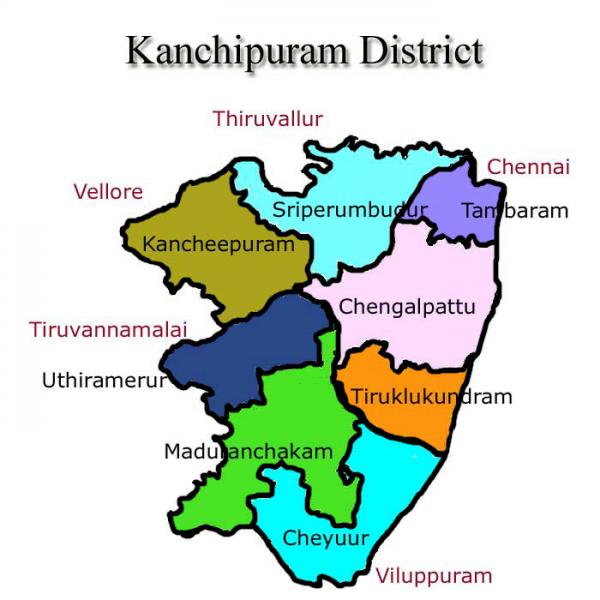History
The district served as a significant capital for various powerful dynasties, including the Pallavas, Cholas, and Vijayanagara Empire. Its rich history dates back to the 2nd century BCE, showcasing centuries of cultural, religious, and architectural brilliance. Kanchipuram was also a prominent center of learning, with a historical reputation as a “place of learning”. It nurtured scholars and philosophers.
Beyond its spiritual significance, Kanchipuram is globally famous for its exquisite Kanchipuram silk sarees. The silk weaving industry is a cornerstone of the district’s economy, with thousands of families engaged in this traditional craft. These sarees are known for their pure mulberry silk, vibrant colors, and distinctive gold zari work. The “Kanchipuram Silk Sarees” received the Geographical Indication tag in 2005, recognizing their unique origin and quality.
The district’s economy is primarily driven by its industrial sector, including large automobile manufacturing units and IT industries. Agriculture also plays a role, with paddy and pulse cultivation being significant.
Kanchipuram truly offers a blend of ancient spirituality, artistic mastery, and modern industrial growth.
Geographical Location of the District
Kanchipuram district is located in the north-eastern part of Tamil Nadu and lies approximately 75 km southwest of Chennai. It is bounded by Tiruvallur, Chengalpattu, Vellore, and Tiruvannamalai districts. The district is primarily flat, with fertile soil nourished by the Palar River. Its proximity to the Bay of Bengal gives it a tropical climate, ideal for agriculture and tourism.

Divisions
Kanchipuram district is administratively divided into Revenue Divisions, Taluks, and Blocks:
- Revenue Divisions: Kanchipuram and Uthiramerur
- Taluks: Includes Kanchipuram, Uthiramerur, Walajabad, Sriperumbudur, and Kundrathur
